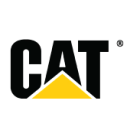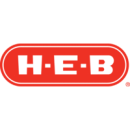A recent tech industry axiom asserts that every company — whether it’s a fast-food restaurant or an industrial machinery manufacturer — is now a tech company. Every business is now data-driven, so the thinking goes, and whether they’re shopping as consumers or B2B buyers, most people expect some kind of digital interface or storefront for their favorite brands or vendors.
As with most clichés, there is a kernel of truth there: All businesses really are becoming tech companies. Or, at the very least, they’re investing in building teams of data scientists, software engineers, UI experts and more to drive the next wave of innovation. For grocery chains, biopharmaceutical companies and banks alike, the next frontier appears to be in cyberspace.
Built In is constantly looking at where the tech industry is headed — and how it’s getting there. It’s become increasingly clear to us that the hottest new Silicon Valley startup or the latest exploits of Facebook, Amazon, Apple, Microsoft and Google only comprise part of the picture. Plenty of innovation is happening far outside tech media’s typical scope of coverage. We’d like to shift that focus.
As we leave the madness of 2020 behind and delve into 2021, we identified 22 large, established companies that are driving innovation in fintech, IoT, data analytics and plenty more. Some are businesses you might not associate with digital technology, like insurers, grocery chains and healthcare providers. Others are working on the kind of digital infrastructure that undergirds entire segments of the economy. To help highlight that work, we talked to their tech leaders about their teams’ achievements over the past year and the projects they’ve got coming up in 2021.

Industry: Financial services company JPMorgan Chase works with corporations, governments and institutions in more than 100 countries. The company employs more than 50,000 technologists around the world, who work across a wide variety of technological fields including big data, mobile, electronic payments, machine learning, cybersecurity and enterprise cloud development.
2020 highlights: Beer said she was proud to have overseen an increase in the gender and racial diversity of her engineering teams last year.
2021 goals: JPMorgan Chase is looking for full-stack Agile engineers who are fluent with cloud computing, artificial intelligence and machine learning, data and analytics and blockchain. Beer said she continues to focus on cultivating a “learn-fast” culture, providing immersive technical training and building technical communities of practice across all of the company’s technology centers. She seeks to build upon her teams’ culture of innovation and collaboration using crowdsource and cloud parties, where application teams receive dedicated support for migrating workloads to the cloud.
What’s a project your tech teams worked on in the last year?
“Nearly two years ago we built our firmwide AI platform, OmniAI, on the public cloud. The technology enabled us to rapidly test and train machine learning algorithms, and ultimately run more experiments with more data.
“Over the past year, OmniAI went from its very first capability — single node model training — to hundreds of projects across every line of business using the platform for end-to-end capabilities, from discovery and model training through production serving on machine learning models. This evolution of the platform has been driven by our business, with every single feature we release having a business use case underpinning its prioritization. Today, our data scientists are leveraging our OmniAI to develop new capabilities. They include incorporating natural language processing to make client interactions more personalized, testing advanced machine learning models to have a more comprehensive view of risk and performing real-time coaching and recommendations for call center agents to help them better serve customers.”
“We’re also continuing our adoption of open-source technologies, like containers and Kubernetes, and prioritizing tools that provide visibility across our distributed systems such as service meshes.”
What challenges are you preparing to tackle in 2021?
“We’ll continue on our hybrid, multi-cloud journey, investing in technologies that will give our engineers and developers choice, flexibility and efficiency. We’re focusing on infrastructure as code and offering our developers both platform and container experiences. We’re also continuing our adoption of open-source technologies, like containers and Kubernetes, and prioritizing tools that provide visibility across our distributed systems such as service meshes. Our focus to build a true cloud platform with cloud-native services tightly bound to the core — with modern capabilities like Kafka and Cassandra — will continue in 2021.
“Cloud, AI/machine learning and blockchain are all exciting new technologies that are currently transforming the financial services industry. We’re already seeing some early breakthroughs and benefits of these technologies and will continue to witness these efficiencies as we move forward. And through all of it, cybersecurity will continue to be paramount, since we are a business of trust.”
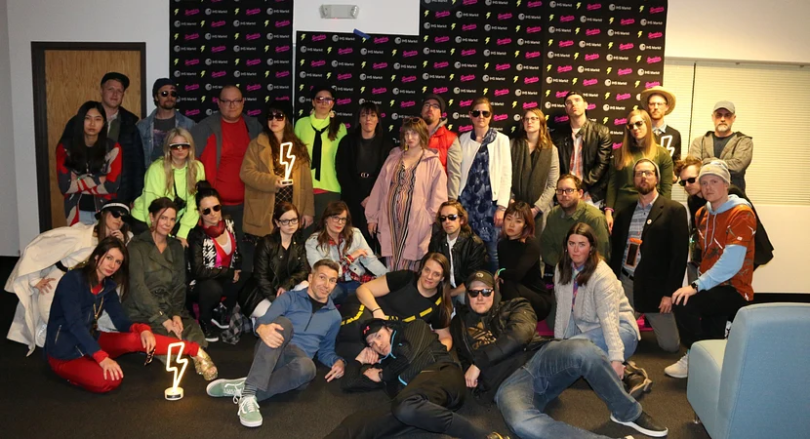
Industry: IHS Markit’s data and information services help companies across industries — from aerospace and agriculture to maritime and retail — leverage data and make informed business decisions.
2020 highlights: This year’s stock market volatility drove new customers to IHS Markit’s digital solutions for the financial industry, boosting that segment’s importance among the company’s overall product suite. Baer said her tech teams also added more than 100 new colleagues worldwide this year.
2021 goals: Baer said IHS Markit has never stopped recruiting senior web developers, SQL engineers and C++ programmers, roles that she considers “evergreen.”
Tell us about the technology trends currently shaping your industry.
“Our technology platform has continued to expand and evolve over the last 28 years, and we expect that to continue in the decades to come. In the last four years, we moved our web architecture forward into a client-side rendered UI backed by a robust API gateway, all delivered within a cloud-native containerized infrastructure.
“Similarly, we want to transform our processing-heavy data aggregation platform by reimagining our communication protocols, data distribution, caching and infrastructure models. From a capability perspective, our fully decoupled presentation layer is ripe for experimentation in all the new mediums for digital experiences, from conversational UI to extended reality. With our world-class UX design team always looking forward, the possibilities are limitless.”
“We successfully served more than 10 million concurrent users at 50,000 requests per second without breaking a sweat.”
What’s a project your tech teams worked on in the last year?
“Since our sites and experiences sit squarely within the work of individual investors — be they on brokerage sites or major news outlets — we are exposed to massive changes in volume. Because of that, we always maintain at least 200 percent capacity over our peak utilization. During the flash crash at the beginning of the pandemic, that was a very good thing as our volumes literally doubled overnight. Since March, we have been working diligently to reclaim that headroom using every technique possible – from infrastructure refresh to code optimization and everything in between. Our success was proven on Monday, November 6th — the day after a potential vaccine was announced — when our traffic doubled again and we successfully served more than 10 million concurrent users at 50,000 requests per second without breaking a sweat.”

Industry: NielsenIQ helps brands understand and optimize customer pathways by analyzing customer purchase data. Formerly known as Nielsen Global Connect, the company changed names as part of a recent $2.7 billion sale to Advent International.
2020 highlights: The company’s platform team oversees its Nielsen Connect software, a multifaceted tool that provides predictive analytics, data and custom applications to help leverage it against business needs. Ramaswamy said his team has spent 2020 onboarding professionals with expertise in APIs and front-end frameworks.
2021 goals: NielsenIQ is looking for professionals with experience in data engineering, site reliability engineering, DevOps, front-end and cloud operations, along with experts in data architecture, security architecture, MLOps and full-stack engineering. Ramaswamy said his team is also readying an internal machine learning platform used by his data scientists — called Intelligence Studio — for external use by NielsenIQ’s clients.
Tell us about the technology trends currently shaping your industry.
“Image recognition, deep learning and robotics are impacting supply chain analytics and creating easy, contactless checkout experiences for consumers. We’re playing in all of those spaces, but primarily focused on the data monetization trend. Many of our clients are investing in data lakes and cloud analytics, and we’re focusing on efficient ways to share information between data lakes in the same cloud or across clouds, creating a federated environment of data.
“We have created our modern cloud-native platform with cutting-edge open-source and best-in-class PaaS technologies. This allows our data lake to store data sets agnostic of source in order to measure e-commerce and omnichannel consumers. Using technologies like Apache Spark and Kafka, we can create transient pipelines to transform, combine and connect data sets for analytics.”
“Using AI, deep learning and optical character recognition, we can extract and process information like product ID, retailer, location, price and promotion.”
What’s a project your tech teams worked on in the last year?
“Our projects are diverse — and it’s hard to describe which is more interesting — so I’ll focus on invention. Today, we have consumers who scan barcodes on the products they’ve purchased and auditors who capture the products that are sitting on a retailer’s shelf. We developed a mobile application that allows them to take a photo of their receipt or the display, and submit it to us for review. Using AI, deep learning and optical character recognition, we can extract and process information like product ID, retailer, location, price and promotion, which is then incorporated into Nielsen’s analytics. This project has allowed us to accelerate our coverage expansion and measure more channels for our clients.”

Industry: MassMutual provides life insurance, investment opportunities and financial wellness services, with several digital tools to help users plan for the future. Cole heads the 169-year-old company’s digital transformation efforts, including the design and development of the software powering those consumer-facing platforms.
2020 highlights: MassMutual continued to grow its cross-functional product development teams throughout 2020, adding new leadership positions as well as full-stack and mobile engineers. Cole said these new colleagues helped her team launch two new mobile applications, develop voice-based technology and partner with MassMutual’s broader technology group to launch a free term life insurance plan for healthcare workers on the front lines of the pandemic.
2021 goals: Cole said her digital experience team will continue hiring for leadership, full-stack and mobile engineering roles. She’s also looking for product owners and scrum experts to join an Agile squad tasked with developing new products or expanding MassMutual’s existing suite. The company also plans to build out its enterprise technology and experience organization with data scientists, engineers and enterprise architecture and cybersecurity experts.
What’s a project your tech teams worked on in the last year?
“A lot changed about the way we work in 2020 due to the COVID-19 pandemic. When our employees and financial professionals across the country pivoted to working remotely, the need to connect more efficiently with customers and safely collect their data became an even higher priority.
“Spark, MassMutual’s digital fact finder, rolled out six weeks ahead of schedule, giving financial professionals a fully digital way to collect customer data. Spark facilitated connections between financial professionals and customers, deepening relationships and fostering conversations about financial protection during uncertain times. Nearly one-third of our financial professionals already use the tool, with half of them finding that it strengthens client relationships and nearly 70 percent using it to close new sales.”
“One of the projects our digital team is focused on is overhauling our internal service platform for customer service representatives.”
What challenges are you preparing to tackle in 2021?
“One of the projects our digital team is focused on for 2021 is overhauling our internal service platform for customer service representatives. This includes integrating AI into our voice experience, streamlining the process for customer service representatives and automating less complex customer service inquiries. Our goal is to ensure customers have the best possible experience and that customer service representatives are spending their time on more complex, high value-add requests.”

Industry: Whole Foods has become one of the world’s most recognizable grocery brands — and it also has a large tech team based in its multi-building campus in downtown Austin, Texas. Founded in 1980, Whole Foods was acquired by Amazon in 2017.
2020 highlights Whole Foods Market saw huge growth in online sales and home delivery this year — for obvious reasons. According to Tseng, who came to Whole Foods from Amazon in March and reports directly to his CTO, this required the company to make large investments in personnel to handle online order fulfillment and ship software system enhancements to support that unprecedented growth.
2021 goals: Tseng said Whole Foods still has a bevy of open roles at all levels, from entry-level software developers to principal engineers. The team is also looking for software development managers, technical product managers and technical program managers.
Tell us about the technology trends currently shaping your industry.
“Cloud technology and machine learning are driving insights across multiple segments of our industry. I expect we will continue to incorporate these technologies into every aspect of the industry over the coming years. Further, these technologies will provide the foundation for leveraging future optimizations of our industry.”
“With the growth in online grocery sales, it has become more important to optimize the fulfillment of these orders.”
What’s a project your tech teams worked on in the last year?
“With the growth in online grocery sales, it has become more important to optimize the fulfillment of these orders. One project we have been working on is reducing the time spent fulfilling online orders, along with improving the ability to support substitution of items that may no longer be available at the time of fulfillment. These improvements not only reduce costs, but also provide for an improved end-customer experience when purchasing items online.”
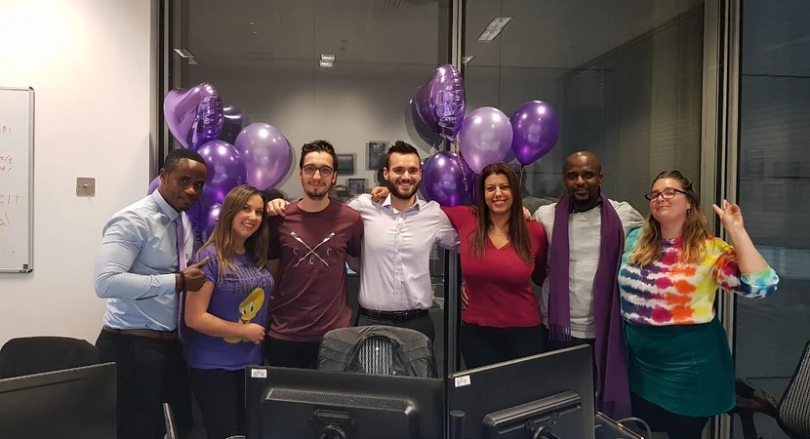
Industry: Donnelley Financial Solutions — also known as DFIN — is a risk and compliance solutions company providing cloud-based domain expertise, software and data analytics for every stage of its clients’ business and investment lifecycles. In 2016, the company was spun out of R.R. Donnelley & Sons Company, a communications firm that was first founded as a Chicago publishing business back in 1864.
2020 highlights: Strimling said DFIN has been “on a digital transformation journey” since 2016, growing revenue across its software portfolio with the aim of deriving 44 percent of its sales from software by 2024. To that end, the company launched multiple new cloud-native SaaS products and expanded the capabilities of existing platforms this year.
2021 goals: Strimling said his team’s biggest challenges involve staying abreast of looming changes at the SEC and other regulatory bodies as they work on several undisclosed projects for the coming year. He estimates his tech team will grow by about 10 percent in 2021.
Tell us about the technology trends currently shaping your industry.
“One of the biggest trends within the regulatory industry is the introduction and expanded use of Inline XBRL, an open standard that enables a single document to provide both human-readable and structured, machine-readable data. This standard is changing how companies interact with the U.S. federal government, as well as required international filings within the European Union. As these requirements continue to grow and demand increases, technologies such as machine learning, stream-processing and workflow automation management become more important. Cloud computing also continues to influence the industry, especially around scale, speed of development and security.”
“Our engineering teams have been hard at work solving complex problems with real-world impact.”
What’s a project your tech teams worked on in the last year?
“Our engineering teams have been hard at work solving complex problems with real-world impact. We have reimagined automated data privacy and integrated it within our virtual data room; tackled the complexities of the London Interbank Offered Rate, a benchmark interest rate for interbank loans and force majeure with machine learning; evolved our architecture with the use of Kubernetes; and continued to modernize key applications. Our engineering and security teams have embraced DevSecOps where security best practices are integrated within both the development and deployment process. All of this has resulted in software growth, customer success and an opportunity to show thought leadership across the industry.”
Industry: Caterpillar’s famous “yellow iron” industrial machinery and vehicles are increasingly infused with digital technologies. Cat Digital is the company’s tech arm, bringing data, advanced analytics and AI capabilities to more than a million connected devices around the world.
2020 highlights: Caterpillar has been on a mission to grow its bench of digital talent over the last two years, focusing on applications development, architecture, machine learning and cloud computing. Redzic said Cat Digital added more than 200 people worldwide in 2020.
2021 goals: Cat Digital is currently developing applications and e-commerce systems for customers and dealers, deepening its predictive analytics capabilities and building a cloud platform to amalgamate all the data coming in from those one million connected devices.
Tell us about the technology trends currently shaping your industry.
“IoT is an enduring industry trend that continues to present tremendous opportunities to grow revenue from Caterpillar’s services, helping us merge the physical and digital worlds. We have been connecting machines and engines and leveraging telematics to create machine insights for more than 20 years, and this fleet of connected assets is one of the largest in the industries we serve.
“We take collected data from the fleet and develop proprietary machine learning models to predict — and therefore help prevent — unplanned downtime and further improve rebuild schedules for machine components. Our state-of-the-art machine learning algorithms show us how machines are being operated in the field using almost real-time data. With this information, our customers can make more informed decisions about their machines while our Cat product groups can use the data to better design new products.”
“We expect 2021 to be a big year for our fleet management apps, which connect a customer’s Cat machines or fleets and help maximize their efficiencies, productivity and profitability.”
What challenges are you preparing to tackle in 2021?
“We expect 2021 to be a big year for our fleet management apps, which connect a customer’s Cat machines or fleets and help maximize their efficiencies, productivity and profitability. We’ll be spending time with our customers in the field to see how these apps work on a job site in everything from tracking machine hours and locations, equipment fault codes, maintenance management and keyless start.”

Industry: Founded in 1905, San Antonio-based grocery chain H-E-B now operates more than 340 stores across Texas and several northeastern Mexican states. The company’s two digital hubs in Austin and San Antonio power its internal logistics systems, virtual consumer experiences, e-commerce portals and more.
2020 highlights: Bath said H-E-B grew across all facets of its digital team, including product management, design, software engineering, data solutions, IT and systems.
2021 goals: H-E-B will continue to invest in its tech talent in an effort to continue improving the experience of both customers and internal stakeholders.
Tell us about the technology trends currently shaping your industry.
“We are seeing our customers embrace services like curbside pickup and home delivery, shaping the way we think about new features and technologies to support these new customer experiences. How a customer shops from their home differs from how they shop in-store, requiring a deeper focus on data solutions delivered via mobile platforms. This is driving a new wave of innovation at H-E-B.”
“In the past year, our teams have worked on more than 500 tools and systems, which form the backbone of our business operations.”
What’s a project your tech teams worked on in the last year?
“In addition to customer-facing technologies, we are also investing heavily in the internal tools and technologies that run our stores, manufacturing facilities, warehouses and transportation network. In the past year, our teams have worked on more than 500 tools and systems, which form the backbone of our business operations. There is no shortage of exciting projects at H-E-B, and we always find that our foundational behind-the-scenes projects are usually the most technically challenging — with the broadest impact.”
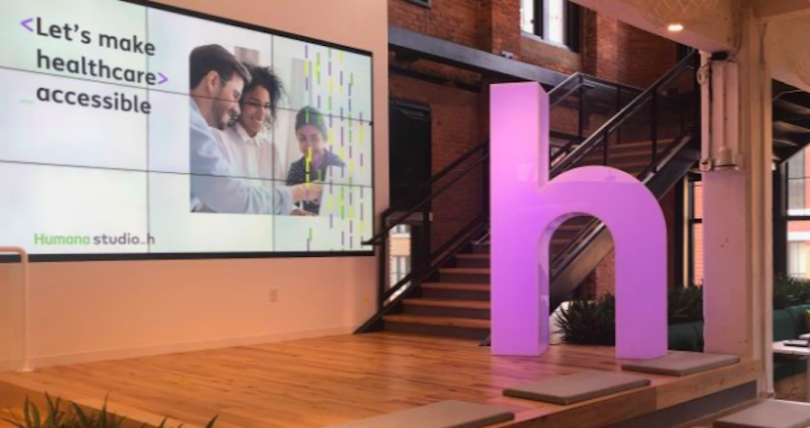
Humana

Who: Slawek Kierner, Senior Vice President of Enterprise Data and Analytics
Industry: Health insurance provider Humana employs a large team of data scientists, engineers and healthcare experts on its Boston-based Studio H team. The group is tasked with pioneering new products and services to improve and maintain the health of Humana customers.
2020 highlights: Kierner said COVID-19 contributed to a rapid acceleration in the adoption of the products his team is working on. These include telehealth, voice recognition and analytics, data governance tools, cloud-based analytics and AI platforms and Databricks-based machine learning capabilities.
2021 goals: Kierner’s enterprise data and analytics team is driving Humana’s ongoing transition to a cloud-native environment. His team is looking for data engineers keen to operate in a cloud-based, big data system based on Azure Synapse and Databricks and capable of processing “petabytes of healthcare data at accelerated speeds.”
What’s a project your tech teams worked on in the last year?
“Over the past year, our team created our own cloud machine learning platform, built by data scientists, for data scientists. It’s a modern platform for automating and accelerating the delivery lifecycle of data science solutions in the cloud. This decreases the time to deploy a data analysis and model, and gain insights and drive decisions. Also, by leveraging reusable data and reusable code, the MLP helps us develop more accurate predictive models that allow Humana to be more nimble in data-driven decision making.”
“We’re currently working on an analytical solution that can identify, stratify and prioritize members at the right time for outreach via our care management platform.”
What challenges are you preparing to tackle in 2021?
“We’re currently working on an analytical solution that can identify, stratify and prioritize members at the right time for outreach via our care management platform. We are using a combination of advanced analytic components to run an analytic engine in the cloud, which will produce a list of prioritized members who were identified for outreach by a multidisciplinary team. Our goal with this project is to improve health outcomes by contacting our members or dispatching home health nurses before someone’s health deteriorates. With this solution, our data and analytics will help people live longer and healthier lives — sometimes literally saving their lives.”
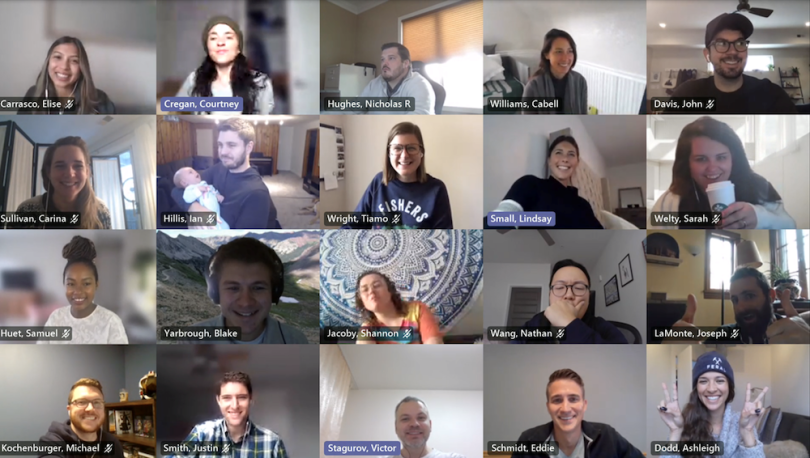
Industry: Payment processing stalwart FIS has helped businesses around the world move more than $9 trillion in around 75 billion processed transactions since it was founded in 1968. The company offers a wide range of financial services designed to help merchants, banks and investors move their money.
2020 highlights: In 2020 the company launched an innovation group it calls FIS Impact Labs, a team of five members that is set to grow to more than 60 throughout the year. The team is tasked with discovering, incubating and scaling what Walchek called “disruptive technologies.”
2021 goals: In 2021, FIS Impact Labs will focus on scaling its operations. The plan, Walchek said, is to launch three new growth initiatives in the coming year.
What challenges are you preparing to tackle in 2021?
“We have a few significant opportunities that are in the validation or skunkworks phase. While I would love to share more, we are keeping them under wraps until they officially launch. This is why you might see titles such as “Head of Engineering — New Venture” or “Software Engineer — New Venture” among our open roles. We are slated to discover, validate, and launch three significant and impactful ventures next year, and there is plenty of opportunity for ambitious professionals on our team.”
“Seldom in my career have I witnessed such awesome and immense opportunity combined with a clear path to driving growth at massive scale.”
What’s your tech team’s biggest area of opportunity right now, and how are you looking to take advantage of it?
“I am going to be purposefully vague as our focal areas are confidential. What I can say is that success for every venture we launch is predicated on its ability to leverage the many strengths of FIS to rapidly achieve scale. There are markets we serve in dire need of disruptive solutions and others laden with pent-up demand yet to be explored. Seldom in my career have I witnessed such awesome and immense opportunity combined with a clear path to driving growth at massive scale. Our team is shaping the future of fintech and we are just starting our journey. I could not be more excited.”

Industry: Discover is a direct banking and payment services company, offering a range of financial products including credit cards, bank accounts and loans. The company also builds technology to help businesses process payments, both in-person and online, and for consumer and B2B transactions.
2020 highlights: Discover’s payment services, data engineering and data operations teams all grew during 2020. One highlight is the company’s multi-year initiative to upgrade its three payment networks — Discover, Diners Club International and PULSE — with a modernized tech architecture and platform to service all payment network needs. It continues to onboard new team members within many areas of the company.
2021 goals: Aside from highlighting its payment network modernization, Raible said Discover continues to accelerate its innovation with advanced analytics and upskill engineering teams as part of an effort to grow its overall base of “expert-level engineering talent” in 2021.
Tell us about the technology trends currently shaping your industry.
“The pandemic has certainly accelerated demand for a touch-free payment experience. We have seen that translate into increased demand for device-based wallets as well as other stored payment token solutions. We continue to deliver digital payment capabilities that help cardholders shop easier with whatever payment method they prefer and give merchants choice and enhanced security across every shopping experience. My team’s most recent innovation is the click to pay program designed to make the payment experience quick, convenient and more secure for merchants and cardholders.”
“We know our software engineers are our biggest opportunity.”
What’s your tech team’s biggest area of opportunity right now, and how are you looking to take advantage of it?
“We are on a mission to deliver a distinct advantage and improve customer experience by being faster to market with a more reliable and higher quality experiences. To achieve that mission, we know our software engineers are our biggest opportunity. They’re doing great work, but are capable of much more innovation. Through simplifying the engineering process, forming our teams in such a way that they are product-focused rather than project-focused, decreasing dependencies and more, we can elevate our engineers to where they can build experiences with a true sense of purpose and belonging, unlike any other workplace.”

The industry: Bank of America’s global technology and operations team spans a workforce of 95,000 people across 35 countries, encompassing nearly half of the bank’s total workforce of 212,000 employees. Bhasin said Bank of America’s technological capabilities and scale of delivery come from “sustained strategic investments in core platforms” that support digital interfaces, products and applications.
2020 highlights: Bank of America spends $10 billion each year on technology, with $3 billion of that total earmarked for new initiatives. Bhasin said that the spending level has been consistent for the last decade, and will continue for the foreseeable future.
2021 goals: Bhasin kept his cards close to his chest on the topic of upcoming technology projects, saying that Bank of America’s overall objective is to make the business of banking function “more seamless, irrespective of back-office or front-office areas of focus.” Under his leadership, Bank of America’s digital teams will also focus on hiring talented and diverse tech professionals nationwide.
Tell us about the technology trends currently shaping your industry.
“Clients want and value the digital experience we’re providing, which in some ways has accelerated due to the pandemic. Whether it’s digital appointments (there were 688,000 appointments in Q3, up from 665,000 in Q2), digital sales (which now comprise 44 percent of total consumer sales) or digital payments (up 18 percent year-over-year in Q3), our clients prize our digital experience.
“Erica, our AI-driven digital assistant built into our mobile app, is a great example of how we’re using AI technology. Since its nationwide launch more than two years ago, Erica has helped more than 16 million clients with nearly 200 million requests. Clients interact with Erica approximately 400,000 times per day, up almost 100 percent year-over-year. Some of the new capabilities we’ve built for Erica include the ability to recognize many pandemic-related needs, the ability to handle numerous wealth-related requests like searching for stock prices or looking up their holdings and extending the technology to help internal associates, such as when advisors need to call AskMerrill to get assistance.”
“Our updated BofA app combines banking, brokerage and institutional retirement functions into a single application, with a customizable dashboard across multiple platforms.”
What’s a project your tech teams worked on in the last year?
“Merrill Guided Investing provides clients access to financial advisors in addition to our digital advice platform. With the launch of Merrill Guided Investing, clients can interact with the FSA advisors via phone, chat, video conference or in-person at offices around the country. The solution completes the gamut of investor service model needs: Merrill Edge for do-it-yourselfers, Merrill Guided Investing for mass-affluent accounts, advisors for slightly wealthier clients who need help and Merrill Wealth Management for high-net-worth individuals.
“Our updated BofA app combines banking, brokerage and institutional retirement functions into a single application, with a customizable dashboard across multiple platforms. Finally, Life Plan is a new digital experience to help clients prioritize their financial goals and steps toward achieving them. It allows customers to select what’s important to them and receive personalized recommendations, with an easy transition from ‘high-tech’ to ‘high-touch,’ which includes help from a bank employee when clients need it.”

Industry: Western Union helps businesses and individual users send and receive money across borders. Aside from building its mobile app and the technology that supports its global network of merchants, Western Union technologists work on the company’s risk management and cash management, used by NGOs, educational institutions, banks and businesses of all sizes.
2020 highlights: With customer need rapidly changing under the COVID-19 pandemic, Western Union’s cross-functional tech teams pushed out expanded digital options and real-time visibility on the status of its retail locations worldwide. Swanback said a decline in in-person transactions was matched by increased traffic via the company’s app and web portal.
2021 goals: Swanback said Western Union is making significant investments in its tech team this year, both through internal development and bringing on new team members. Enterprise architecture, data architecture and cloud engineering are all key areas of growth in 2021.
Tell us about the technology trends currently shaping your industry.
“Financial services right now are doing a lot of work on user interface and user experience. We want the customer experience to be as seamless and frictionless as it is for other industries and services, while also offering the reliability and availability our brand is known for. We also are putting a lot of energy into real-time payments, so people can send money anywhere in the world and know that it has reached the receiver as quickly as possible.”
“We are modernizing our services to improve the customer experience and the operations that deliver them.”
What’s your tech team’s biggest area of opportunity right now, and how are you looking to take advantage of it?
“Our company transformation to a service platform connecting people and businesses across borders has been underway for several years now. It involves a thorough re-imagining and modernization of our tech stack, from the consumer experience online to the processes that move the money to the stringent regulatory and compliance requirements we have to meet everywhere we do business. We are modernizing our services to improve the customer experience and the operations that deliver them. This includes exploring the use of virtual assistants, making it easier for our partners to connect to our services, expanding our use of cloud services, advancing our data and predictive insights to enable more curated customer experiences and developing more sophisticated pricing algorithms.”
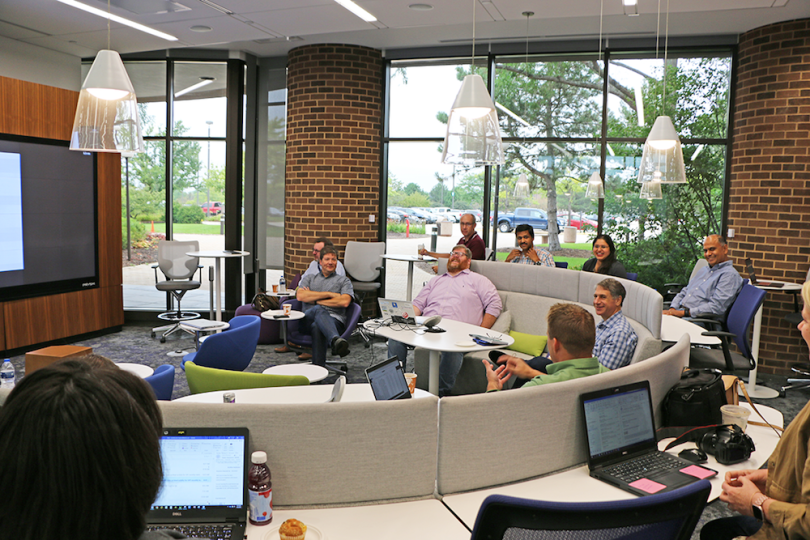
AbbVie
Who: Jennifer Van Camp, Senior Director of Data Solutions
Industry: AbbVie discovers and delivers medicines and treatments across immunology, oncology, neuroscience, eye care, virology, women’s health and gastroenterology.
2020 highlights: Van Camp said her team’s investments in cloud and high-performance computing enabled “sophisticated data science” in 2020. Results of that investment include automated bots to increase the team’s daily efficiency and new ecosystems to break down barriers between once siloed solutions.
2021 goals: AbbVie is currently building a team tasked with creating a data and knowledge platform that will help the company deploy AI in its scientific research. The company is looking for seasoned architects and developers devoted to designing, building and operating the technology, and Van Camp said she envisions the group “having the feel of a tech startup coupled with the resources and patient-centric culture of AbbVie.”
Tell us about the technology trends currently shaping your industry.
“As a research-based, global biopharmaceutical company, AbbVie is currently investing in artificial intelligence to understand what we do while continually improving how we do it. Our implementation of robotic process automation allows our machines to do what they do best and enables our people to focus their efforts on the most meaningful work. Beyond conventional alphanumeric data, AbbVie is incorporating 3D and 4D imaging data with its application of deep learning algorithms in classification and segmentation. Additionally, we are exploring the application of quantum computing to the drug discovery process, particularly in the realm of in-silico prediction.”
“We’re driving toward a culture of data collaboration at an unprecedented scale.”
What’s a project your tech teams worked on in the last year?
“Our daily work is much more than just working on cool tech — it is about collaborating across various R&D functions to deliver solutions that really matter to our scientists and ultimately make a lasting impact on our patients. In the last year, our software engineers and data scientists have worked with researchers across the organization to deliver data in ways that immediately improves the speed and quality of our decision making.
“We are building a massive data and knowledge platform that, among other things, will give AbbVie the ability to leverage artificial intelligence to further scientific research and develop insights from data-driven patterns that humans cannot identify. We’re driving toward a culture of data collaboration at an unprecedented scale. Scientific research has historically been an exercise in deep expertise, but we believe that through collaboration, AbbVie will achieve data insights previously unimaginable, which will contribute to our collective purpose of making a remarkable impact on people’s lives.”

HUB International

Who: Grace van Til, Executive Vice President of Technology and Operations
Industry: Insurance brokerage HUB International provides an array of products and services covering property, casualty, risk management, life and health, employee benefits, investment and wealth management. Founded in Canada in 1998, the company moved its corporate headquarters to Chicago in 2001.
2020 highlights: Van Til’s technology and operations team grew in almost every discipline in 2020, and completed a number of significant merger and acquisition integrations. The team also helped modernize HUB’s end-user experience, and built tools to deliver executable data and enterprise application platforms.
2021 goals: In the coming year, van Til said her team plans to bring on deep technical and operational expertise from IT operations, engineering, network experts, project managers, developers, architects, business analysts, data engineers, security professionals and instructional designers.
Tell us about the technology trends currently shaping your industry.
“A tightly coupled partnership between technology and business strategy is the winning combination to drive innovation in the insurance industry. Beyond the buzzwords or latest flavor of the day, HUB’s technology and operations teams work closely with our frontline leaders and employees to drive innovation that reflects our customers’ changing needs. Whether it’s robotic process automation to enable faster straight-through processing, robust networks and infrastructure, omnichannel learning or the latest collaboration and voice technologies for our employees, we are building our innovation roadmaps to meet our customers where they’re at today, and where they will be tomorrow.”
“We have significant programs planned that cut across collaboration, unified communications, network and infrastructure, self-service, security, data, development projects, applications, automation, learning and development and cloud.”
What challenges are you preparing to tackle in 2021?
“In 2021, Hub’s technology and operations team will continue our transformational programs to accelerate our growth through enabling technologies that drive a best-in-class, connected customer experience to protect our customers today and tomorrow. We have significant programs planned that cut across collaboration, unified communications, network and infrastructure, self-service, security, data, development projects, applications, automation, learning and development and cloud. Beyond hiring for critical skill sets, in 2021 our leaders — including CIO Kuldip Mohanty, CTO Seth McCallister and VP of Security Jeremy Embalabala — will focus on cultivating and nurturing our teams to evolve our skills and hire new talent.”
Zulily

Who: Tim Ragland, VP of Analytics
Industry: Seattle-based e-commerce hub Zulily launches new deals and products each morning, sourcing discounts for users on everything from clothing to furniture. The company functions as a fully connected system, intermediating between customers and its ecosystem of vendors.
2020 highlights: Ragland’s team of analysts and data scientists are responsible for generating insights, programs, products and data solutions for Zulily’s marketing, merchandising and technology teams. In 2020, the company saw huge traffic around categories like arts and crafts, toys, outdoor playsets and bakeware, and Ragland’s team tested programs to engage customers with those products.
2021 goals: Ragland said increased interest in so-called “affordable e-commerce” provides new opportunities to pair business analysts with machine learning engineers to test new site experiences, marketing initiatives and other data-driven projects.
Tell us about the technology trends currently shaping your industry.
“Machine learning, data science and data analytics are converging more than ever before. Business analysts had previously only focused on looking back at business performance and modeling future programs. Now, we’re side-by-side with machine learning engineers creating better ways to measure, test and even predict the behavior of customers as they interact with advertising, engage with content in the app and more. The interoperability of the two disciplines is a crucial part of how analytics is evolving, and a change I welcome.
“Overall, we’ve been focused on expanding experimentation capabilities so that we’re constantly optimizing to what matters most to our customers. As e-commerce grows as an industry, there are so many factors to track beyond a customer’s spend history and sessions. There are many ways to measure engagement and lifetime value, and that is something we focused on in 2020. And with more people shopping online than ever, there’s a lot to dive into.”
“We have touted self-service insights as a strength in the past, but 2021 is when we plan to pour rocket fuel on the effort to ensure it takes seconds — not hours or days — to get insights.”
What challenges are you preparing to tackle in 2021?
“For 2021 we’ll be focused on ramping up our business intelligence products, which enable our stakeholders to make the most accurate decisions for our customers and Zulily. We have touted self-service insights as a strength in the past, but 2021 is when we plan to pour rocket fuel on the effort to ensure it takes seconds — not hours or days — to get insights. These insights create even more hypotheses and predictions which then create a virtuous cycle with our culture of experimentation and improvement.”

State Street

Who: Spiros Giannaros, CEO of Charles River Development and EVP at State Street
Industry: As the second-oldest bank in the United States (founded in 1792), State Street combines its institutional experience with new technology to empower investors. In 2018, the bank acquired Charles River Development, combining its front and middle office investment management SaaS with State Street’s own front, middle and back-office capabilities to create an end-to-end interoperable buy-side platform. As CEO of Charles River Development, Giannaros also serves as an executive vice president at State Street.
2020 highlights: Giannaros said his team spent much of 2020 delivering on their vision for AlphaSM, a strategic investment management platform that consolidates disparate data environments and leverages the Azure cloud to provide frictionless access to front, middle and back-office operations, along with third-party content. Having the right data strategy, he said, is an increasingly important differentiator in that market.
2021 goals: State Street is developing new cloud-native SaaS solutions and migrating existing enterprise platforms in 2021, with a focus on user-centric design, modularized architecture and elastic scale. The company is also looking for people with expertise in investment management and data platforms, along with cloud and SaaS operations.
Tell us about the technology trends currently shaping your industry.
“Our clients face several significant challenges to business growth. Fee pressures created by the shift to passive investments, combined with the cost burden of increased regulations, have forced the industry to re-evaluate its business operations. The innovation required to distinguish their organizations has given rise to firms outsourcing the commoditized parts of their business and investment processes to focus on areas that provide differentiation. The investment industry’s historically slow, but steady, adoption of cloud-based technology has accelerated because of the pandemic, and will lead to a myriad of platform changes over the next 12-36 months. Cloud technology can increase resiliency, streamline operations and reduce risks associated with legacy technology.
“Additionally, AI and machine learning are growing in importance as many firms have already maximized location arbitrage and seek additional cost savings and new investment insights. Smart order routing to global liquidity venues is helping buy-side firms reduce trading costs, be more opportunistic about source liquidity and more effectively demonstrate best execution to their clients and regulators. ML is being used to build more responsive analytics, helping clients realize better risk-adjusted returns.”
“We continue to drive (our strategic cloud platform) towards a modular, multi-tenanted architecture that leverages cloud technology for different computational scenarios.”
What challenges are you preparing to tackle in 2021?
“Now that our first clients are live on our Azure strategic cloud platform, we continue to drive it towards a modular, multi-tenanted architecture that leverages cloud technology for different computational scenarios, spanning large data sets and complex algorithms with millisecond response requirements.
“We will be also launching capabilities to enable wealth managers to offer customized tax-efficient and environmental, social and governance-aware portfolio tools. The goal is to help individual investors express their ESG preferences in their investment portfolios and benefit from optimal tax outcomes.”

Northwell Health

Who: Dr. Purna Prasad, Vice President and Chief Technology Officer
Industry: Northwell Health employs a network of researchers, entrepreneurs, educators and tech staff supporting some 3,300 physicians across more than 800 hospitals and care centers. The company also supports a robust medical research and development program centered on its Feinstein Institutes for Medical Research facility on New York’s Long Island.
2020 highlights: Northwell’s tech teams made significant advances in cloud computing, software-defined networks, bot technologies and the use of consumer tech in clinical settings this year, said Prasad. Meanwhile, a Northwell employee — Intensive Care Nurse Sandra Lindsay — was the first American to receive a COVID-19 vaccine last month.
2021 goals: Prasad said his team will continue to grow its cloud computing technical expertise in the coming year.
What’s your tech team’s biggest area of opportunity right now, and how are you looking to take advantage of it?
“To enable agile deployment of services, we are using serverless computing in a cloud computing execution model where the cloud host provides the server and provisions services on demand. We are deploying bot technology like NORA (a virtual Northwell Assistant) using serverless computing. NORA is a search genie that brings accurate and precise information to our clinicians, mitigating the need to open up the entire medical record. It’s a sort of search engine for the EMR.
“We are using containerization to provide reliability and security for applications. Containerization helps run software reliably and makes it flexible to move from one environment to another. We are continuously evaluating applications that could be moved from a server-based on-prem environment to a virtualized cloud-based environment. Using containerization, we can enable applications to run on mobile platforms like tablets and phones using a bring-your-own-device infrastructure. This enables the applications hosted by Northwell to run on a container on a BYOD without touching other user-owned applications. This mitigates the need to envelop the entire BYOD platform with Northwell oversight, ensuring that private user data is not visible to Northwell.”
“In the coming year we’re excited to add new full-stack software developers and UX/UI developers to our team.”
What’s a project your tech teams worked on in the last year?
“We’ve worked on a lot of interesting projects over the last year. In addition to our work with cloud computing, containers and bots, we’ve been rolling out a new virtual desktop interface, thin clients, tap-and-go technology and robotic process automation. In the coming year we’re excited to add new full-stack software developers and UX/UI developers to our team, as well as network engineers to build out our software-defined networks.”

Liberty Mutual Insurance

Who: James McGlennon, Executive Vice President and Chief Information Officer
The industry: Founded in 1912 and based in Boston, Liberty Mutual is the world’s sixth-largest property and casualty insurer. Like many large industry incumbents, Liberty Mutual is in the process of implementing AI and data initiatives across the business and digitizing everyday operations for brokers, agents and consumers.
2020 highlights: Liberty Mutual’s tech teams spent 2020 testing AI and ML algorithms on everything from customer journeys to employee experience. The company also accelerated its migration to the cloud as part of its pandemic-induced adoption of virtual technology offerings.
2021 goals: McGlennon plans to bolster his team’s data science and data engineering capabilities as the cloud migration continues, supporting remote onboarding operations and doubling down on building an organization rooted in diversity, equity and inclusion.
Tell us about the technology trends currently shaping your industry.
“Data will continue shaping the industry. More and more data can now be integrated to simplify the insurance product set — automating the entire process for our customers to help them do everything from getting a quote to filing a claim — with fewer questions, and less energy or friction.”
“Once we’re on the other side of COVID-19, we have an opportunity to define how coming to work will look and how to set up new interactions.”
What’s your tech team’s biggest area of opportunity right now, and how are you looking to take advantage of it?
“There are a few opportunities for 2021, the biggest of which is accelerating the use of data and cloud technology. More importantly, once we’re on the other side of COVID-19, we have an opportunity to define how coming to work will look and how to set up new interactions. That’s a big opportunity for those who can figure it out early. We will continue investing in our people through retraining and reskilling to meet the future needs of the business, and we’ll help our business reprioritize what’s most important in pursuit of our KPIs and compelling customer experiences.”

SAC Wireless

Who: Joe Sanzo, Chief Strategy Officer and Anil Jha, VP of Data Analytics
Industry: SAC Wireless builds wireless network infrastructure, paving the way for 5G (and even 6G) networks. The company specializes in site development, architectural and engineering design management, construction services and management, equipment installation and maintenance for 5G LTE upgrades, indoor and outdoor small cell and distributed antenna systems deployments, and major network projects.
2020 highlights: Sanzo said the company’s 5G and small cell deployment work took on increased urgency under the COVID-19 pandemic as the country became more reliant than ever on wireless network infrastructure. The company also created a new product group to deliver a wide variety of network edge solutions, including small cell deployment.
2021 goals: With a suddenly decentralized workforce, SAC Wireless is investing in technology to preserve data security and network stability during traffic spikes. Meanwhile, research and development in the IoT field will create new installation and implementation opportunities for the company’s technologists and tower crews.
What’s a project your tech teams worked on in the last year?
Sanzo: “With the concert industry on indefinite hiatus and sports stadiums and arenas filled for the most part with virtual fans, some facility owners are using the downtime to completely upgrade the private wireless networks within their facilities. When fans do return, a completely new experience will await them. Private LTE and 5G technologies allow tens of thousands of users to access a secure network during the event, watch instant replays, access game and player stats, and share photos and livestream video to socials. Meanwhile, the same technology allows network operators to slice and segment users to ensure emergency communications and on-field team communications are not compromised when attendance and data flow reaches capacity.
“Meanwhile, as wildfires blaze from the west coast to Colorado it’s more important than ever for utility companies to mitigate any role downed power lines could play in potential fire ignition. We’re testing out a responsive private LTE system right now that uses thousands of sensors across a vast network of power lines to constantly monitor, send and receive data. Within a millisecond, power can be shut off to a compromised power line, rendering that single line cold before it ever hits the ground. Once perfected, this strategy will prevent the need to shut down entire power grids during inclement weather.”
“Research and development for 6G is already well underway.”

What challenges are you preparing to tackle in 2021?
Jha: “While all the talk these days is about 5G, research and development for 6G is already well underway. We’re working with product teams and reviewing roadmaps to better prepare for the engineering, deployment and maintenance of these systems. New technologies will continue to improve the way we work, learn, receive healthcare, connect and enjoy entertainment.
“Rapid advancement in modern wireless technology has made it very easy to collect and analyze large amounts of data. In the last ten years, big data platforms have also become relatively inexpensive and faster to implement. Meanwhile, cities are seeing their operating costs spiral out of control. Telemetry offers many solutions, including automation and predictive, prescriptive and cognitive analytics. Real-time traffic control could reduce congestion, prevent accidents and help citizens spend less time commuting. Automated collection of parking tolls could help the city collect more by spending less. Crime prevention, proactive utility maintenance, disaster recovery, optimized resource allocation and better, data-driven governance — the list goes on in ways big data can solve big problems for cities of all sizes.”

Chipotle

Who: Nitin Malhotra, Senior Director of Enterprise Project Management Office
Industry: After pioneering the “fast-casual” dining category, Mexican food chain Chipotle is now banking on digital technology to spice up its customer offerings. The company’s tech teams power the systems supporting its mobile ordering, delivery, drive-through and recently unveiled “digital kitchens” — or locations that only support online orders for pick-up and delivery.
2020 highlights: The role of Chipotle’s tech teams has grown with the company’s spiking share of digital sales and the implementation of its mobile order-to-drive-through “chipotlanes.” Malhotra said the company grew its product management, software development, data analytics, cybersecurity, infrastructure and enterprise project management teams.
2021 goals: Malhotra said Chipotle is constantly seeking professionals to fill the ranks of its product management and design, mobile development, architecture, cybersecurity, data engineering and automation teams.
In what area(s) did you see the most growth in 2020?
“In 2020, Chipotle experienced significant digital growth. The onset of COVID-19 increased our guests’ desire for quick and convenient access to Chipotle’s real ingredients and fresh food. Pre-pandemic, approximately 20 percent of sales came from our digital mix. As of Q3, our digital mix makes up almost 50 percent of total sales. Aside from adding new team members, the increased demand led to the growth of our digital footprint, which includes new delivery partners like Uber Eats and Grubhub and the rollout of digital ordering across Canada. These initiatives complemented existing access via the Chipotle app, website and delivery with DoorDash and Postmates.”
“Chipotle will continue leveraging technology and data to make more informed decisions across the business.”
What challenges are you preparing to tackle in 2021?
“Chipotlanes are truly the drive-thru of the future. Seeing the concept expand across the nation is exciting. As we grow our Chipotlane footprint, I look forward to the future of restaurant tech and the boundaries we will push in 2021. Chipotle will continue leveraging technology and data to make more informed decisions across the business in unexpected ways that will enhance the guest, employee and overall Chipotle experience.”

Chamberlain Group

Who: Gani Nayak, Chief Technology Officer
Industry: One of the biggest garage door opener makers in the world has also carved out a sizable chunk of the smart home devices market. Chamberlain Group’s brands, LiftMaster and Chamberlain, account for a majority of all new garage door opener installations. In recent years, the company has launched an IoT garage door opener, smart locks and smart security cameras.
2020 highlights: Nayak said Chamberlain’s tech teams were busy in 2020, launching the industry’s first garage door opener with a built-in camera and two-way communication. Nayak is also charged with expanding the company’s overall suite of connected products and services.
2021 goals: Chamberlain’s tech teams will continue to grow in 2021. Nayak said he will also focus on investing in an environment where principles of diversity, equity and inclusion are front and center.
Tell us about the technology trends currently shaping your industry.
“We are moving from a company that opens doors to one that creates seamless access journeys by connecting people, points and events. By creating smarter hardware with enhanced data, knowledge and visual insights, we are building an access ecosystem that is expanding access points in homes, businesses and communities. Beyond that, we will leverage technological applications like AI to provide people with increasing convenience around access.”
“Our engineers and developers are working on the latest advances in smart access technology.”
What’s a project your tech teams worked on in the last year?
“Our engineers and developers are working on the latest advances in smart access technology. In addition to creating the first-ever garage door opener with a built-in wide-angle camera and two-way communication, Chamberlain Group recently expanded its myQ-connected ecosystem to include smart cameras and locks. These garage door openers, locks and cameras offer a full suite of products for a complete smart home access solution that allows homeowners to monitor and control the home’s main entry points anytime, from anywhere — all from one app.”
Traditional recruiting is broken. Here’s how we fixed it.
Responses have been edited for clarity and length.














